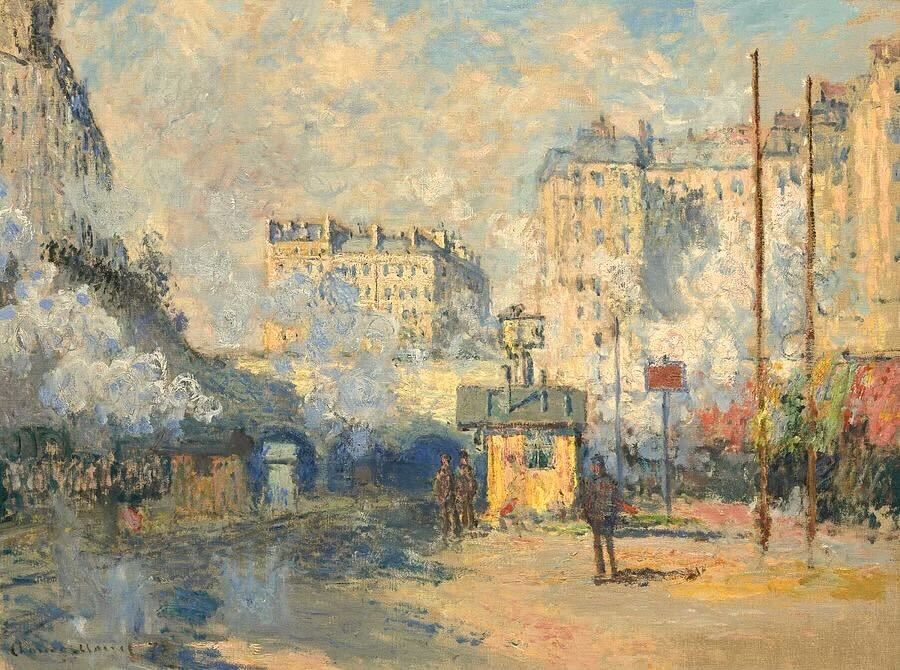
✺
My friend grew up in 1980’s Shanghai, before air conditioning. The summers were sweltering, but the concrete apartment block had a central courtyard. So at night, everyone would go down and hang out there. The courtyard made it so that the tenants could come together in their shared need to escape the heat. As a result, everyone knew each other, friendships thrived, a community was formed. But then air conditioning arrived.
At first, not everyone could afford air conditioning, so people crowded into the one apartment that could afford it. It was fun, for a time. Then air conditioning became cheaper and more accessible, so everyone got it. People would just stay in. This didn’t happen all at once, but each time one person decided not to go out, it reduced the value of going out for everyone else. Over time, the courtyard grew empty.
This describes the problem our cities and neighborhoods are currently facing at scale.
Historically, major cities were created either as trade cities, resource cities, or intentional government projects.
Trade cities were located where goods could flow in and out. Chicago is a perfect example: there’s a canal that leads out to the Atlantic and rail connections to the rest of the country. These trade cities became more settled over time; as more people moved there, the trade became more valuable, because the city turned into even more of a central “hub” of economic activity. This breeds a longer term mindset towards settling there.
The second kind of city is a resource city—a “mining town”—in which there is a resource that can be extracted, and which initially brings people to it. Literal mining towns are one example, but Las Vegas is another. In Las Vegas, the resource was regulatory arbitrage on running gambling, so the city focused on extracting that value. These cities emerged more recently in history, because they rely on more rails, shipping, and so on. You need to get food and supplies into the desert.
Cities like St. Petersburg or Dubai, on the other hand, are essentially government projects, created in order to become the “special city” of the country. These are rare, and often fail.
These cities were originally very distinct from each other, but over time, as they became more settled, they also became increasingly alike. But remnants of their initial purpose are still present in their character. San Francisco, for example, began as a mining town. People moved there for the Gold Rush. They came with dreams of getting rich, of primarily extracting value—and it’s still largely that way now. A telltale sign of a resource city is that there are more men than women, as men are more likely to venture into the unknown in an attempt to get rich. People often talk about this as if it’s a good thing, but in reality it makes men less rational, because the reward is great on the high end, but in the middle and low end most people don’t make it. Resource cities attract stupid and ambitious men like moths to the flame. This is why San Francisco is still full of them.
Transit is also important for the creation of cities. People think that transit is built to serve already existing communities, but in reality the transit system gets built first—and then the communities spring up around it. You build the city where the river is, you don’t bring the river to the city. When the Long Island railroad was built, people made fun of it, because there was nothing else around it. Now, it’s totally surrounded with stuff. Transit must come first, because no one will build in a place that people can’t get to. You build houses where the subways are, you don't move the subway to the houses.
A new city should invest in transit early, and be intentional about it. Transit infrastructure determines the pattern of development. If you invest in interstate systems like Houston, you’ll get a pattern of development like Houston. If you invest in subway systems, you can get something like Hong Kong—which has a brilliant self-funding transit system through the property value increase that it creates. In Hong Kong, they put the station in, then bought up all the land around it. There is a massive value unlock when you build a transit system, but it’s almost never captured by the transit system itself. So there is a lot of room for creativity there.
This is how cities were built in the past—out of necessity, whether that was work or transportation. A city was, and in most cases still is, a labor market.
But what about now, when remote work has freed so many from the need to move to cities for jobs?
First of all, we’re a long way away from a completely remote economy. While remote work has freed some of us to choose where we live, it’s unclear what that means for the future of cities. If remote work destroys the need for a local labor market, this might actually disadvantage cities. If you can work from home, why live in a city? You get all the downsides—piled on top of your neighbors, more expensive, smaller living space—with little of the upside.
There are, however, still good reasons to live in a city. In San Francisco, I can walk to my friends’ houses, and give my kid a more varied experience of life; my kid can meet all different kinds of people. Some cities, like NYC, still have a superior dating market. These are all fundamentally people-centered, as opposed to labor-centered. One possibility is that, freed from the strictures of the labor market, the city of the future might re-emerge as a place which exists to serve the relational needs of people who live there, and is less about their work.
While a new city might start off with remote workers, it must eventually become a breeding ground for local businesses and startups. As more people work from home, fostering a sense of vibrant, local community will become increasingly important. Like air conditioning, or anything else which makes it hard to leave our homes, remote work will have an atomizing effect on the neighborhood. I live in Pacific Heights, where a lot of people work remotely, and people don’t have any reason to leave their homes. Any new city must be designed in such a way that it encourages people to gather.
The problem with modern living is the same thing that makes it great: it’s too comfortable. I’m not volunteering to give up my A/C. Any attempt to foster real community will, in some basic sense, require sacrifice on the part of those in the community. Anyone trying to do this will have to figure out how they’ll get people to sacrifice for the greater good, and get them to stay involved in the community. Church, for example, does this by saying, “Okay, we’re going to meet every Sunday.” Another example is the overlook in the Berkeley Rose Garden, which people visit to watch the sunset together. Designing and creating opportunities for people to come together can be done architecturally, as with the overlook, or on the level of value systems, as with church, but either way there needs to be a physical space where people gather, and there needs to be a reason bigger than oneself to gather, even if it’s just something like watching the sunset.
Bondi Beach in Sydney is another great example. It is only open to the public on Sundays. If you want to apply to be a part of the community, you have to go there every Sunday for a year, and you’re only allowed to miss like two Sundays. Not only are they fostering community by having a place where people gather, but community membership is discerned by who will actually be there. Infrequent weekenders are takers. They have no incentive to make the beach a better place. When you’re building a new community, you want people in the community who have skin in the game.
Skin in the game creates community. Every community can only afford some percentage of tourists and takers. This is why there are such expensive hotel taxes in cities. Tourists are extractive: they’re there to use all the nice things, not to create them. Cities must find a way to reward people who are there long term. There should be rewards for those who participate in civic life and make the city better. In the ideal city, the shape of the tax burden would eventually go negative as you contribute more and more. Imagine a new city where people who contribute more to the community are rewarded.
Another way of thinking about this is to ask: What does it mean to be an owner of the city? With home-ownership, for example, the home-owner has the sense that if the city does well, he does well too. Having some material equity in the city is important. But what’s more important is how much people care about their specific neighborhoods. The question becomes something like: Do people care about where they actually live? Do they benefit when they take prosocial actions that make the neighborhood a nicer place?
Incentive structures should reward good behavior. These can be financial, or social. It’s easier for financial incentives to break behavior than to make behavior. The goal with financial incentives should basically be to not make things worse. They should not be set up so that people root against new development in their neighborhoods, or any other common good. With things like Prop 13 in California, residents share in 100% of the downside but none of the upside. One should want more jobs and people in their city, because, though it can be destabilizing in some respects, it’s generally beneficial for the whole city. This isn’t always the case with intentional communities—where one should be rigorously selective about the people who can be a part of it—but it’s true as a general rule.
Social incentives can be even more powerful. At the high school I went to, all of us shared in the maintenance work, and this totally changed the feeling of our shared space. If one of us littered, we knew that one of our peers would have to clean it up, and there would be a social cost to that. If you made a mess, you heard about it. Often, in cities today, there isn’t even this basic sense of social unity. The incentives work against the community, and this is totally untenable.
Ultimately, there is only so much top down engineering one can do. I support federalism at the city level. People want different things, and they should be able to organically congregate around them. It’s better to have different things existing alongside each other than to make everyone compromise all the time. This also creates a kind of dynamic friction, which can help give a city life, and give each neighborhood its own character.
Today, our cities still operate like labor markets. But increasingly, due to remote work, they will no longer serve this function. This creates an opportunity: to design the city of the future, focused on solving for the things I’ve just described. Historically, intentional communities have had a terrible track record. The idea sounds good—“I’m going to live around people who share my values”—but in practice it doesn’t work, unless you’re a religious community, like the Amish. And even if it does work, it only works for one generation, because the kids don’t want to live there. Intentional communities have historically cut you off from the flow of modernity. But I’m fundamentally a progressive—I believe in progress, and I believe that a better future is possible. There is an incredible city waiting to be built.

